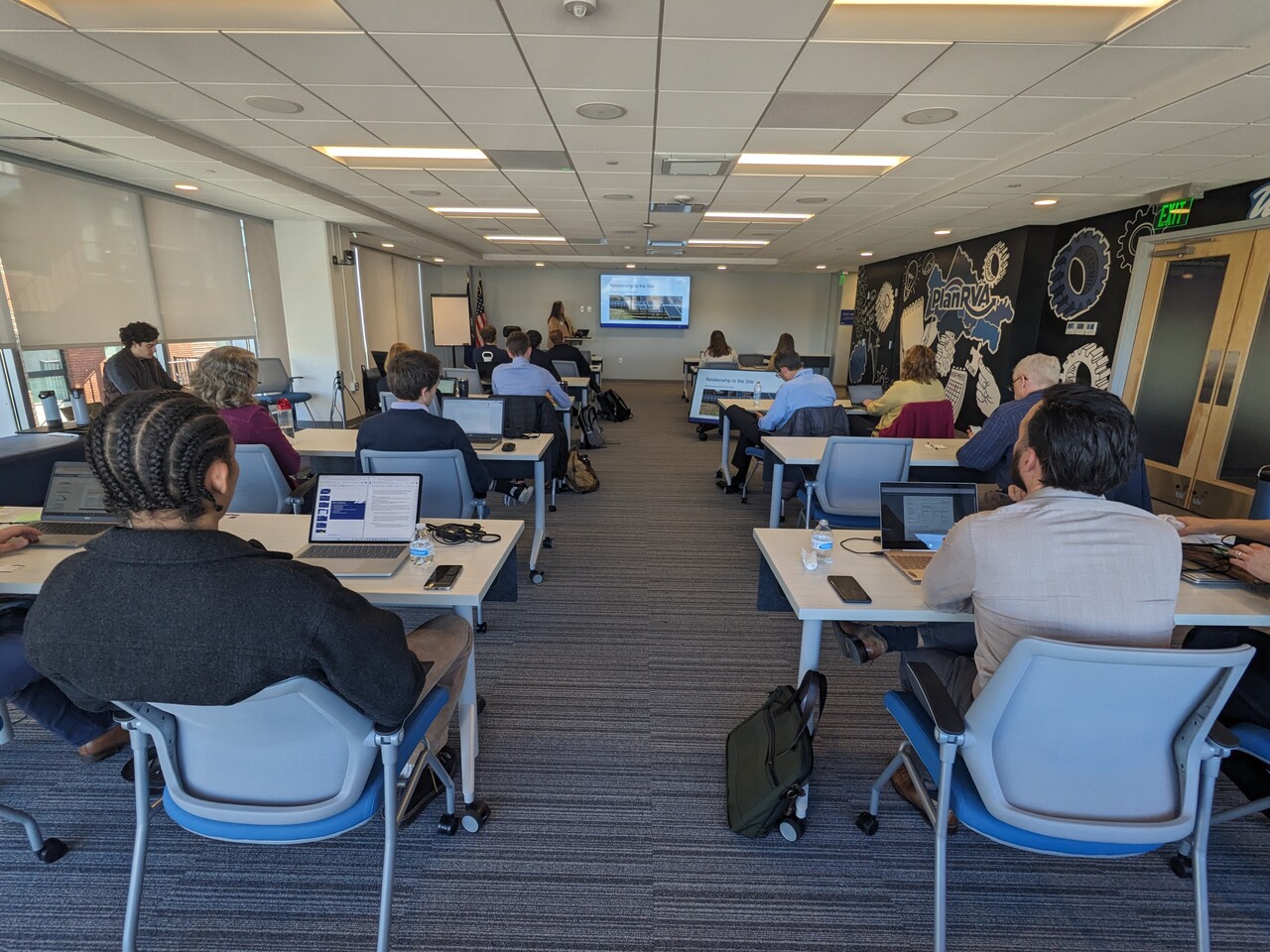PlanRVA Achieves National Designation for Solar Efforts
PlanRVA recently received Bronze designation from the national SolSmart program for implementing best practices in solar.
As a SolSmart Bronze designee, PlanRVA adopted nationally recognized best practices to advance solar market growth. The organization worked with SolSmart's no-cost technical assistance team to increase local knowledge of solar energy that will benefit the region.

“The Bronze designation is a market signal that our region is ready for the clean energy transition and that we are a good place to do business,” said PlanRVA Resilience Planner Nicole Keller. “At the same time, we are working to equip our localities with the information and tools they need to determine for themselves what that looks like in their own communities. We are responding to the needs of our localities by offering tailored trainings and support. We want to encourage the green energy transition in our region, but make sure that it happens in a just way.”
To receive this designation, PlanRVA developed and posted a solar resource landing page to their website; developed a regional solar suitability siting and mapping tool to help developers and localities plan for the most appropriate locations of ground-mounted solar installations; and hosted in-person solar training workshop for local government staff and officials in their region. Below is a recap of those efforts.
Building a Solar Web Resource
PlanRVA launched a webpage dedicated to enhancing solar efforts across the region. While the page shares an overview of PlanRVA’s commitment to solar, it also serves as a resource to both localities and community members interested in going solar.
Many learnings from the workshop were packaged and added to the website, including information about permitting and zoning and the benefits of going solar. Other resources include:
- Recommendations for finding a contractor
- What you need to know before committing to a project
- Consumer protections and solar rights
- Financing, incentives and tax information
- Best practices for localities and businesses
- Job training and career help for those interested in a career in solar
- A solar suitable mapping tool
More information can be found at https://planrva.org/environment/solar.
Solar Suitable Mapping Tool
PlanRVA’s new Solar Suitable Mapping Tool allows planners and developers to review land and areas to determine how suitable they may be for solar development. The tool uses weighted overlay, a method that uses GIS, to layer data on geographic regions. The tool looks at and assigns a suitability score for land cover, land use, forest conservation value, slope, distance from transmission lines and solar irradiation and assigns a final score. Users can toggle on and off different layers of data to better understand how a final score is determined.
“We had been hearing a desire from localities for years that something of this sort was needed,” said Keller. “Developers were inundating Virginia counties with permit applications and locality staff’s time is valuable and limited. This tool allows users the ability to quickly assess land for planning purposed.”
Through SolSmarl, the team was able to utilize technical advice and experiences from experts to build this tool and leveraged the work of VCU’s L. Douglas Wilder School of Government and Public Affairs fellow Matthew Snow in helping to build the tool.
Half Day Workshop for Localities
During fall 2023, PlanRVA hosted a half day solar workshop for localities. Representatives from Chesterfield, Luisa, Powhatan, Henrico, Richmond, Ashland and other localities attended.
Louisa County presented experiences and lessons learned in utility scale solar permitting. Other subject matter experts included national experts from SolSmart, the World Rescue Institute, Virginia Weldon Cooper Center and the Virginia Department of Energy.
Presenters covered many different topics from solar 101 to technical aspects and logistics and best practices for planning and permitting.
“Coming out of the workshop, we heard from localities an interest in more training like this, specifically around issues and emergencies that involve solar,” said Keller. “We’re already planning for more workshops as we continue to make strides and earn the next designation level from SolSmart.”


